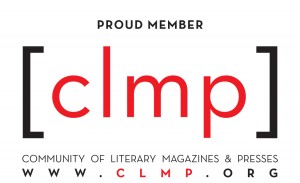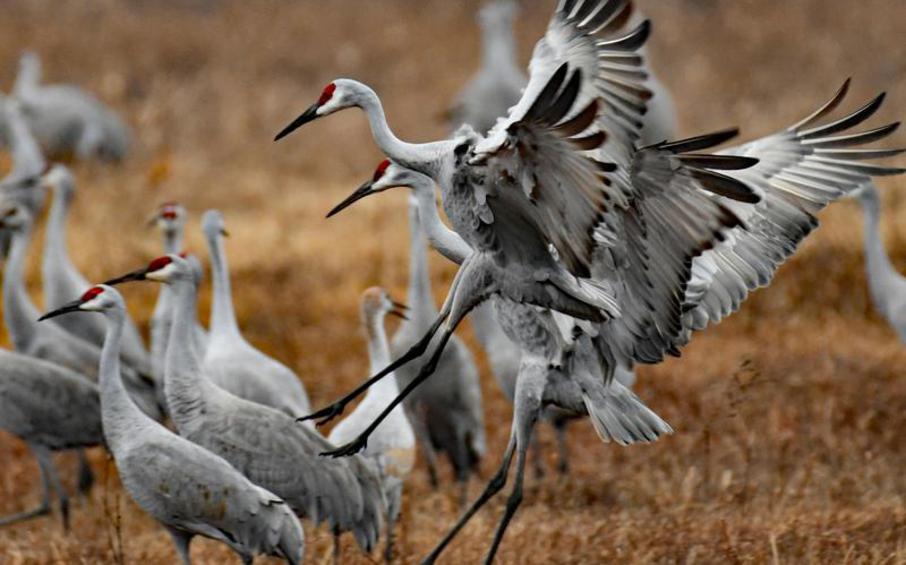by Nicole Gantz
July 15, 2025
Wedding of the Foxes by Katherine Larson; Milkweed Editions; 208 pages; $20.00.
The act of writing itself may be one of the main themes of Katherine Larson’s Wedding of the Foxes, but this collection of essays is primarily a bold attempt to confront society’s failure to prioritize climate change. This is fitting for a book published by Milkweed Editions, as ecological stewardship and conservation are primary tenets of the publisher. Larson’s book continues this commitment by concentrating on her personal experience with science, the earth, and society’s interactions and responses to both. Her collection explores the “becoming” space of earthly relationships and makes the intangible bonds of humanity’s connection to earth and its inhabitants, both sentient and not, material, effectively leading readers through the seemingly impenetrable space between what is and what ceases to be. This focus culminates in an imaginative and often insightful perspective on creation, destruction, and the liminal space they occupy in our environment.
Throughout Wedding of the Foxes, Larson performs careful excavations of these lost or forgotten connections, and then charges humanity with rediscovering them. The essays “Threshold” and “Twilight” introduce and conclude a collection that recognizes and responds to the many states of “in-between” that humanity consciously ignores or cannot see. The author does this by first naming and then dismantling popular binaries, both natural and manufactured (another binary to be questioned). These elucidated liminal spaces can be as straightforward as an endangered species or as complex as the timeless struggle between a woman’s spiritual/intellectual freedom and the gravity of a hopelessly grounded motherhood. Thus, the names of the first and last essays from Wedding of the Foxes are nods to the overall theme of the book: all space is liminal in the Anthropocene.
Humanity’s relationship to animals is an especially important component of Larson’s ambitious project. Essays like “The Crane Wife” and “Monarch” focus on our intimate relationship, or lack thereof, with animals. Larson advocates for, anthropomorphizes, or eulogizes these animals through narrative, science, and poetry, inevitably highlighting the imbalanced connection between our species and the many others that populate the earth. The most notable addition is a paragraph-turned-poem in the essay “The Crane Wife.” After the initial paragraph of the section “Vulnerable and Endangered Cranes I,” Larson intersperses four versions of the same collection of words between four versions of a Japanese folktale about a Crane-turned-human wife who spins her feathers into cloth for her new husband. This story of sacrifice and exploitation humanizes the plight of animals in a society that often devalues them. The prose poem, a steady erasure and retrieval of language that becomes increasingly occupied by blank space, is a confrontation of humanity’s systematic extermination of our ontological connections to animals. By forcing readers to visualize a tragedy that can only be repaired through active participation, Larson effectively charges us with the task of reparation.
Larson also uses her extensive education in Japanese literature as another framework for Wedding of the Foxes. In essays like “Kintsugi,” “Haunted Household Objects,” and “Blue Horizon,” Larson draws from the bottomless well of Japanese folklore, looking at objects (especially teapots) and traditions to find connections between her life and the culture she enshrines. This is perhaps most evident in the eponymous essay, “Wedding of the Foxes,” which focuses on Larson’s profound connection to a collection of shorts in Kiro Kurosawa’s Dreams, a film based on Kurosawa’s own recurring dreams. Though Larson only discusses two of the shorts at length, the entire film can be summarized as an exploration of memory, loss, violation, and the pursuit of reconciliation. In these essays, which also include retellings of her own dreams and the “dream-people” that haunt them, Larson continues the theme of using “failure and our imagination” to address and combat “our current sixth extinction and climate crisis."
Larson extends that accusation in her letter to Godzilla, entitled “My Monster, Your Monster, Our Monster” (a personal favorite!). With its vulnerable yet assertive tone, this letter is the uncanny mirror image of Larson herself, facilitating an aporia she implores us to embrace throughout the book. It is also a forced reckoning that utilizes society’s obsession with sensationalized “othering” to shame us into confronting the eco-conscious metaphors that make the Godzilla films compelling monster stories. This is stated plainly towards the end of the letter, when Larson makes her most aggressive appeal for action:
Your presence has become unusually complex: you’re a monster and a savior, an enemy and defender, a
commentary on scientific progress and environmentalism, a menacing figure and an impetus for change. We
can’t reckon with the current crisis if we’re still telling ourselves that it doesn’t exist. I pick up the “burning
Godzilla” latex figure on my desk. Did you know the latest bushfire season in Australia killed more than a billion
animals? I hold you and think of the koalas burning. I’ll say that again: koalas burning to death.
With this embrace of performative styles of communication and aggressive confrontations, Larson’s letter to a giant lizard monster serves as a polemical condemnation of us all.
And even when the essays in their culmination can at times feel well-worn, this collection of essays takes an admirable risk in form. Larson begins Wedding of the Foxes in the first person, then transitions to the third, before transitioning back to first in letters she writes to female Japanese writers. This pattern continues through the final essay, potentially keeping readers from the essay's intended message until it becomes clear that Larson is still writing about her own experiences, where a switch to the third person hints at a potential desire to find herself through careful examination. By keeping herself at a distance in these essays, Larson avoids directly confronting her own culpability in the broken connections she hopes to repair.
This may be why quotes and references serve as one of the primary sources of meaning-making throughout Wedding of the Foxes. By her own admission, Larson’s profound connection to the stories and wisdom of these writers repairs the pieces of her soul that she loses in the grind of everyday life — life as a scientist, a woman, a collector, a writer, a wife and mother, and as a human being alienated by an apathetic society amidst our current environmental crisis. Invoking other work, employing third-person POV, these are tools that universalize earthly experience; in her absence, Larson makes room for us. It isn’t until the end of the book that Larson reveals the purpose of her perspective switches, writing, “[w]hen she writes to them, I am no longer standing outside of my body, looking in." Switching verb tense mid-sentence underscores how easy it is to escape from both our personal struggles and the truth and shame of our complacency. And by beginning in third person and ending in first, she performs a reparative act, potentially signaling readers to do the same.
Larson offers her summary of the project in the fourth chapter: “She has begun the essay thinking about patina. Thinking about her life. Now she is casting off the layers. And in the end, it isn’t about her life after all." In this essay titled “Gleaners,” the author challenges readers to sift through the forgotten memories and unexplored mysteries we superficially accumulate throughout our lives. We are not to cull in this process of self-discovery but, like the many Japanese teapots she collects and examines, we are to recognize and confront the connections left to rust on the surface of our experience.
That is the call Larson's readers are meant to respond to: look for connections to the earth that we’ve taken for granted, listen thoughtfully to the wisdom that we’ve forgotten, and embrace the liminal space that bears the weight of our fragile existence.
__________________________________________________________________________________________________________________________________________________________________________
__________________________________________________________________________________________________________________________________________________________________________
__________________________________________________________________________________________________________________________________________________________________________
What Is and What Ceases to Be in Katherine Larson’s Wedding of the Foxes
FICTION REVIEW
Image by Brian Forsyth from Pexels
Nicole Gantz is a writer and literary critic from Charlotte, North Carolina. She received her Masters in English Literature at the University of North Carolina at Charlotte. Her work has been published in L'Esprit Literary Review, and another critical essay will be published in Journal of Modern Literature later this year.
__________________________________________________________________________________________________________________________________________________________________________
__________________________________________________________________________________________________________________________________________________________________________
© 2025 Iron Oak Editions
Stay Connected to Our Literary Community. Subscribe to Our Newsletter




